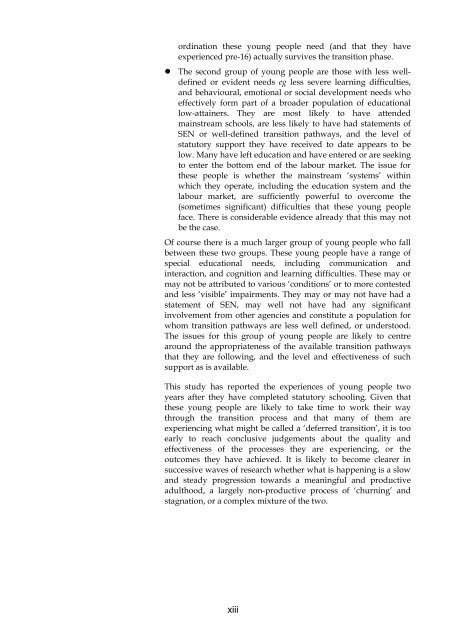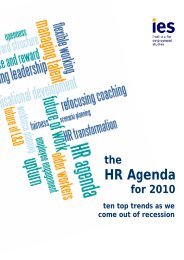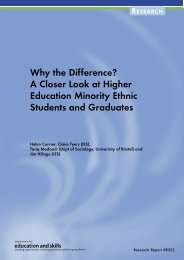Post-16 Transitions: a Longitudinal Study of Young People with ...
Post-16 Transitions: a Longitudinal Study of Young People with ...
Post-16 Transitions: a Longitudinal Study of Young People with ...
Create successful ePaper yourself
Turn your PDF publications into a flip-book with our unique Google optimized e-Paper software.
ordination these young people need (and that they have<br />
experienced pre-<strong>16</strong>) actually survives the transition phase.<br />
• The second group <strong>of</strong> young people are those <strong>with</strong> less welldefined<br />
or evident needs eg less severe learning difficulties,<br />
and behavioural, emotional or social development needs who<br />
effectively form part <strong>of</strong> a broader population <strong>of</strong> educational<br />
low-attainers. They are most likely to have attended<br />
mainstream schools, are less likely to have had statements <strong>of</strong><br />
SEN or well-defined transition pathways, and the level <strong>of</strong><br />
statutory support they have received to date appears to be<br />
low. Many have left education and have entered or are seeking<br />
to enter the bottom end <strong>of</strong> the labour market. The issue for<br />
these people is whether the mainstream ‘systems’ <strong>with</strong>in<br />
which they operate, including the education system and the<br />
labour market, are sufficiently powerful to overcome the<br />
(sometimes significant) difficulties that these young people<br />
face. There is considerable evidence already that this may not<br />
be the case.<br />
Of course there is a much larger group <strong>of</strong> young people who fall<br />
between these two groups. These young people have a range <strong>of</strong><br />
special educational needs, including communication and<br />
interaction, and cognition and learning difficulties. These may or<br />
may not be attributed to various ‘conditions’ or to more contested<br />
and less ‘visible’ impairments. They may or may not have had a<br />
statement <strong>of</strong> SEN, may well not have had any significant<br />
involvement from other agencies and constitute a population for<br />
whom transition pathways are less well defined, or understood.<br />
The issues for this group <strong>of</strong> young people are likely to centre<br />
around the appropriateness <strong>of</strong> the available transition pathways<br />
that they are following, and the level and effectiveness <strong>of</strong> such<br />
support as is available.<br />
This study has reported the experiences <strong>of</strong> young people two<br />
years after they have completed statutory schooling. Given that<br />
these young people are likely to take time to work their way<br />
through the transition process and that many <strong>of</strong> them are<br />
experiencing what might be called a ‘deferred transition’, it is too<br />
early to reach conclusive judgements about the quality and<br />
effectiveness <strong>of</strong> the processes they are experiencing, or the<br />
outcomes they have achieved. It is likely to become clearer in<br />
successive waves <strong>of</strong> research whether what is happening is a slow<br />
and steady progression towards a meaningful and productive<br />
adulthood, a largely non-productive process <strong>of</strong> ‘churning’ and<br />
stagnation, or a complex mixture <strong>of</strong> the two.<br />
xiii

















